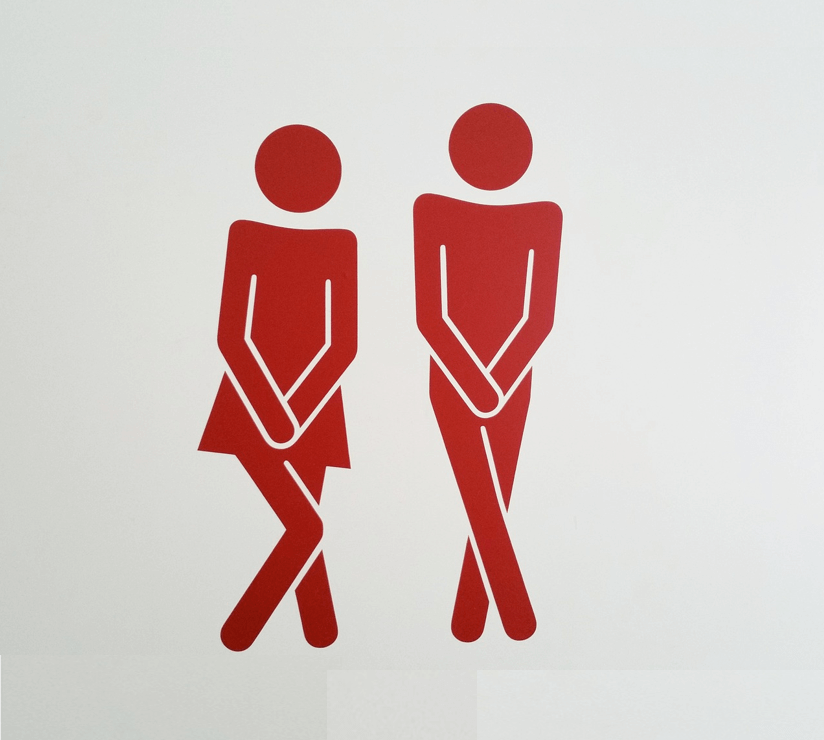It’s not something many people talk about, but hemorrhoids (or piles) are a common nuisance that affect most people at some time during their life. At least one in three adults has hemorrhoids at any one time. They cause a range of distressing and painful symptoms, yet one study found that only four out of every one hundred people affected seek medical help.
What are hemorrhoids?
Hemorrhoids are such an ancient problem that their name even derives from Ancient Greek. Hippocrates used the words haema (meaning blood) and rhoos (meaning flowing) to describe the flow of blood from the veins of the anus.
Hemorrhoids (sometimes spelled haemorrhoids) or ‘piles’ are basically varicose veins in the back passage. Having operated on a few during my surgical training, I can report they consist of enlarged, bulging blood vessels, surrounded by clumps of muscle and elastic fibres within the lining of the anal canal. These ‘piles’ form soft, fleshy lumps that may remain inside the back passage or be visible from the outside.
Hemorrhoids that form below an anatomical region called the dentate line are described as external hemorrhoids, while those that form in veins above this line are known as internal hemorrhoids. Internal haemorrhoids can bulge outside the body (prolapse) and they are further graded by their degree of protrusion.
- First degree haemorrhoids barely prolapse, and are the most common (72% of cases). Even though they may be ‘mild’ they can still cause itching and discomfort.
- Second degree haemorrhoids form an external lump on opening the bowels, but disappear spontaneously afterwards.
- Third degree hemorrhoids cause persistent prolapsing and dilation of the anal sphincter but can be manually tucked back inside.
- Fourth degree haemorrhoids prolapse most of the time but may go back in when you are lying down. I’ve seen cases that resemble a large bunch of grapes, and their owner was more than happy to put up with the discomfort of surgery to get rid of them.
What causes hemorrhoids
The tissues in the anal lining are not well supported, so anything that increases pressure in its veins can cause them to stretch. Like varicose veins in the leg, hemorrhoids are one of the prices we pay for walking on two legs rather than four.
Increase pressure in the anal veins can cause their internal valves to give way so blood pools in the area and the vessels become increasingly distended and tortuous.
Hemorrhoids usually result from constipation and straining. They are also common in late pregnancy, when the poorly supported pelvic veins become congested, and among weight-lifters.
Symptoms of hemorrhoids
Haemorrhoids can cause discomfort, unpleasant sensations of not emptying the bowel properly, embarrassing itching, mucus discharge and bleeding.
Piles are not usually painful unless there is a complicating feature such as spasm or an anal fissure (small tear in the anal margin often due to straining or constipation).
The worst hemorrhoid pain occurs if the blood in an external pile becomes trapped and clots to form a hard, dark, purple lump (thrombosed pile). If this occurs, seek medical advice as removing the clot under local anaesthetic will bring rapid relief.
Bleeding hemorrhoids
One of the most common symptoms of haemorrhoids is losing bright red blood from the back passage on opening the bowels. If this occurs, always tell your doctor – don’t just assume it is due to hemorrhoids. Bleeding from the back passage is also a sign of other bowel diseases and may need further investigations to rule out inflammatory bowel diseases or bowel cancer.
This is so important that I’ll say it again – always get rectal bleeding checked by your doctor. He or she is used to dealing with this symptom (we assess it almost every day) so don’t let embarrassment put you off seeking help. A quick medical check (yes it’s not something anyone looks forward to, but doesn’t take long, can put your mind at rest and confirm the diagnosis of hemorrhoids so you can get on and treat them.
Why do hemorrhoids itch?
Itching is one of the most troublesome symptoms of hemorrhoids, and are due to a build-up of sweat and small bits of ‘poo’ in the skin folds that form around a hemorrhoid. Keep the area scrupulously clean to help stop itching – wash with unscented soap after each bowel motion, finish with cold water (to help them shrink) and pat dry with soft tissue. If necessary, dry the area using a hairdryer set on gentle heat (don’t do this in the bathroom, but in the bedroom for electrical safety).
Home treatment of piles
The treatment of piles involves applying a cream, gel or ointment, using suppositories, adjusting your diet and taking a laxative if necessary. Applying an icepack designed for the area will help swollen piles shrink, while a special orthopaedic ring cushion will help you sit more easily, as follows.
Hemorrhoid creams
Numerous creams are available to relieve the discomfort and itching of piles. These usually contain a combination of:
- an astringent (to help shrink swollen, inflamed tissue)
- an anti-septic (to reduce the risk of infection)
- a soothing emollient (to reduce itching and discomfort)
- an anti-inflammatory agent (to reduce swelling and inflammation)
- a local anaesthetic (lidocaine to numb itching and relieve discomfort)
- Herbal creams may include horse chestnut extracts, coconut oil, calendula (marigold) or smoketree extracts.
Apply according to on-pack instructions as each brand is different. A cream or gel will sink in while an ointment will remain on the surface which can feel a bit squishy when you walk, but does protect the area from rubbing. Which you use will come down to personal preference.
See recommended haemorrhoid creams on Amazon.co.uk, Boots and Amazon.com.
NB Some haemorrhoid products contain Balsam of Peru. While this smells lovely (a cross between vanilla and cinnamon) and is antiseptic, it is a cause of contact allergy with around 4% of people sensitive to this ingredient. If your symptoms of itching and swelling become worse rather than better after applying a hemorrhoid cream, this could be why. Check the label.
Suppositories for haemorrhoids
A glycerine suppository, gently inserted into the back passage, will melt at body temperature to lubricate motions, soothe irritation and reduce straining to give hemorrhoids a chance to heal.
A suppository containing zinc oxide and lidocaine will soothe and numb the area, reduce itching and encourage shrinkage.
See recommended haemorrhoid suppositories on Amazon.co.uk, Boots and Amazon.com.
Icepacks for hemorrhoids
Applying an ice pack will cause your hemorrhoids to shrink and bring instant relief. The Hemorrwedge Haemorrhoid Treatment Ice Pack (from Amazon.co.uk and Amazon.com) makes this easy by providing two silicone gel freeze packs – one to use while the other stays cool. Simply sit on the ice pack for 10 to 20 minutes and the swelling will reduce. Rinse the pack with warm soapy water after use and return to the freezer (in its hygienic case) ready for next time you need it.
Cushions for hemorrhoids
If a painful haemorrhoid makes sitting uncomfortable, use this ring (Amazon.co.uk and Amazon.com) to sit without pressing on the area. It makes a huge difference – and if anyone asks why you’re using it, say you have coccyx pain (for which it’s also used).
Supplements and hemorrhoids
Supplements that help to strengthen the supporting connective tissues around prolapsed veins are used to help prevent or improve haemorrhoids. These include vitamin C, red vine leaf extracts, pine bark (Pycnogenol), horse chestnut and gotu kola extracts.
NB Do not take supplements during pregnancy.
Laxatives for haemorrhoids
A daily fibre intake of 30g is recommended for digestive health, so aim to eat more fruit, vegetables, beans and whole grains. This should improve constipation, especially if you increase your fluid intake to 2 to 3 litres per day.
If this doesn’t work a laxatives may help to get you going. These fall into four main groups based on how they work.
Bulking agents (eg ispaghula, sterculia, methyl cellulose) contain indigestible plant fibre which, when taken with water, increase the volume of bowel motions, helping to soften your motions and providing more bulk to help propel bowel contents downwards. These may take several days to work.
Faecal softeners (liquid paraffin, arachis oil enemas) increase the penetration of water and fats into solid bowel motions. This softens faeces, eases straining and is useful for painful conditions such as anal fissure and haemorrhoids. These usually work within 24 to 48 hours.
Osmotic agents (eg lactulose, lactitol, macrogols such as polyethylene glycol, magnesium salts) draw fluid into the bowel to soften stools and provide lubrication to ease constipation. Lactulose/lactitol are ‘gentle’ and usually work within 24 – 48 hours after the first dose. Magnesium salts have a powerful action and are best reserved for medical use (eg before bowel imaging studies). Their onset of action is rapid.
Stimulants (senna, bisocodyl, dantron, docusate sodium, glycerol, sodium picosulfate) stimulate increased colonic motility – start with a low dose to avoid abdominal cramps. Onset of action is usually rapid, within 6 – 12 hours. NB These may be too strong for painful or prolapsed haemorrhoids.
See recommended laxatives on Amazon.co.uk, Boots and Amazon.com.
Self-help for hemorrhoids
- Follow a mild, non-spicy, high-fibre diet and drink plenty of fluids to maintain normal consistency bowel motions.
- Take steps to reduce constipation. For more information on diet and constipation, click here.
- Take a probiotic to improve general digestive health.
- Reduce straining on the toilet by leaning forwards from the hips when opening the bowels.
- Consider using a Squatty Potty on which to rest your feet for a more natural bowel movement without straining. See Squatty Potty on Amazon.co.uk and Amazon.com.
- Use glycerol suppositories to ease motions and reduce straining.
- Bath or shower every day using unperfumed soap, and finishing by spraying the area with cold water.
- Wear loose cotton underwear, changed at least once a day.
- Aim to lose any excess weight – this can dramatically improve haemorrhoid symptoms.
If symptoms don’t settle down quickly don’t be afraid to consult your doctor.
Medical treatment of hemorrhoids
If home remedies do not solve your symptoms, then medical treatment will depend on the severity of the piles. Surgical treatments are available to shrivel piles with infra-red light, radiofrequency, heat or laser energy. Hemorrhoids can also be tied off with special bands that cut off their blood supply so they shrivel, or by surgical removal.
The Procedure for Prolapse & Haemorrhoids (PPH) uses a special ‘stapler’ to gently pull prolapsed tissues back into their normal place rather than cutting them away. This is much more comfortable than traditional surgical procedures.
What has solved your haemorrhoid symptoms?





